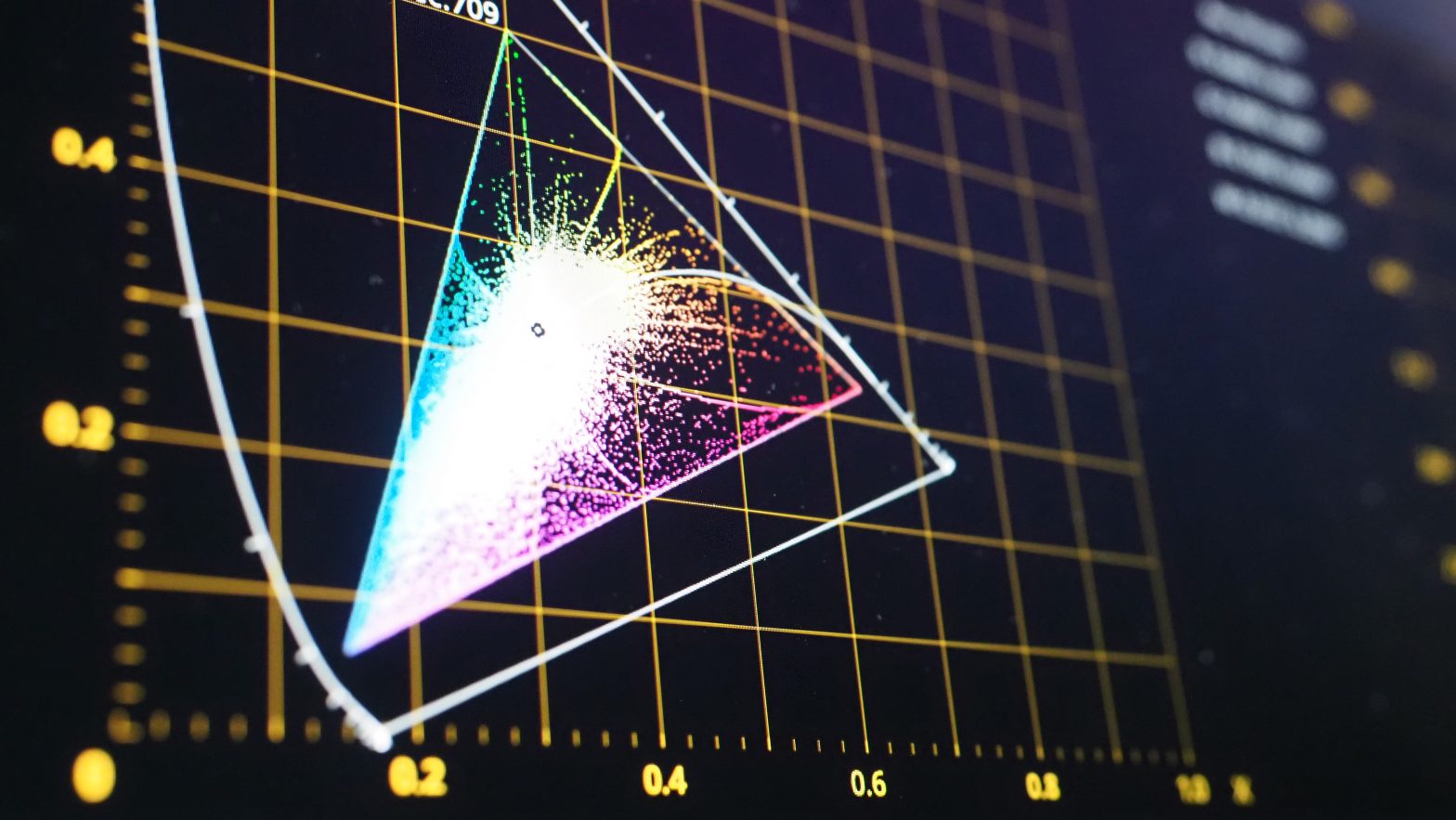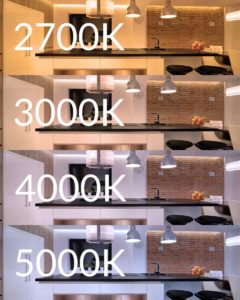
Calculate CIE 1931 xy coordinates from color temperature (CCT)
CIE 1931 xy coordinates can be approximated using color temperature (CCT). Simply plug in the CCT value into our online calculator.
Looking to go the other way? See our CIE XY to CCT calculator.
Looking to input spectral power distribution (SPD) data instead? See our SPD to CIE 1931 xy calculator.
CCT:
*These coordinate points are on their respective loci but color temperature values are approximate due to imprecise calculations of the corresponding isotherm values.
Color temperature is a color metric in lighting that describes the color of a white light source. It is measured in degrees Kelvin (K), and ranges from 1,000K to 20,000K. Common color temperatures used in indoor applications range from 2700K to 6500K.

Color temperature corresponds to a theoretical physics concept called the "black body," and is used to define the color temperature scale. The sun, as well as the tungsten material used in incandescent lamps are approximately black body radiators.
As a "black body" object increases in temperature, its color appears increasingly blue. The path that this takes, when plotted on the CIE 1931 xy coordinate plane, is called the black body curve or black body locus.
When light from a black body radiator such as (approximately) the sun enters earth's atmosphere, various gases absorb and alter the spectral content of sunlight, and scatter it across the sky. The aggregate result of this light is called daylight, and is slightly different from the original black body radiation emitted by the sun. Specifically, color temperatures above 5000K map to a slightly higher "y" value - qualitatively this corresponds to a slightly greener hue. Color temperatures below 5000K map to the same xy values for both daylight and black body loci.
The TM-30-15 metric builds upon both the daylight and black body loci, but use a combination of the two between 4000K and 5000K. This eliminates a "jump" that occurs at 5000K, and attempts to smooth this out.
If you have grasped the difference between the black body curve and daylight, it should become clear why color temperature needs to be "correlated."
Color temperature is based on a theoretical black body that virtually never corresponds to light sources we actually encounter in our daily lives. The color of natural daylight, for example, is altered by gases in the atmosphere, and artificial lighting such as fluorescent lamps and LED bulbs can also differ from the color of black body radiators.
As a result, color temperature needs to be "correlated" to a black body radiator color temperature. This process is akin to asking "to what temperature of a black body radiator does this light source come closest to?"
Some color points may be correlated to a color temperature more than others - this is where the limitations of a one-dimensional CCT metric can be an issue.
Read more: use the Duv metric to account for green/magenta shifts
Lookup tables are available for download here.
Looking to go the other way? See our CIE XY to CCT calculator.
Looking to input spectral power distribution (SPD) data instead? See our SPD to CIE 1931 xy calculator.
CCT to CIE 1931 xy Calculator
Black body: -
Daylight*: -
TM-30*: -
*These coordinate points are on their respective loci but color temperature values are approximate due to imprecise calculations of the corresponding isotherm values.
What is color temperature and how does it relate to CIE 1931 xy coordinates?
Color temperature is a color metric in lighting that describes the color of a white light source. It is measured in degrees Kelvin (K), and ranges from 1,000K to 20,000K. Common color temperatures used in indoor applications range from 2700K to 6500K.

Color temperature is a one-dimensional metric that is useful usually in describing white light sources only.
When non-white sources are also involved, such as RGB and full color gamut systems such as Waveform Lighting's FiveSpect LED strip, color temperature is an insufficient metric. Instead, the CIE 1931 xy coordinate system is used. Unlike color temperature, CIE 1931 xy coordinates are two-dimensional, and a specific color can be pinpointed using a pair of coordinate values.
Every color temperature can be plotted on the CIE 1931 xy coordinate plane and expressed as a pair of xy coordinates rather than a Kelvin value. The calculator above provides this conversion.
What is the difference between black body, daylight and TM-30-15?
Color temperature corresponds to a theoretical physics concept called the "black body," and is used to define the color temperature scale. The sun, as well as the tungsten material used in incandescent lamps are approximately black body radiators.
As a "black body" object increases in temperature, its color appears increasingly blue. The path that this takes, when plotted on the CIE 1931 xy coordinate plane, is called the black body curve or black body locus.
When light from a black body radiator such as (approximately) the sun enters earth's atmosphere, various gases absorb and alter the spectral content of sunlight, and scatter it across the sky. The aggregate result of this light is called daylight, and is slightly different from the original black body radiation emitted by the sun. Specifically, color temperatures above 5000K map to a slightly higher "y" value - qualitatively this corresponds to a slightly greener hue. Color temperatures below 5000K map to the same xy values for both daylight and black body loci.
The TM-30-15 metric builds upon both the daylight and black body loci, but use a combination of the two between 4000K and 5000K. This eliminates a "jump" that occurs at 5000K, and attempts to smooth this out.
The nuanced difference between Color Temperature and Correlated Color Temperature (CCT)
If you have grasped the difference between the black body curve and daylight, it should become clear why color temperature needs to be "correlated."
Color temperature is based on a theoretical black body that virtually never corresponds to light sources we actually encounter in our daily lives. The color of natural daylight, for example, is altered by gases in the atmosphere, and artificial lighting such as fluorescent lamps and LED bulbs can also differ from the color of black body radiators.
As a result, color temperature needs to be "correlated" to a black body radiator color temperature. This process is akin to asking "to what temperature of a black body radiator does this light source come closest to?"
Some color points may be correlated to a color temperature more than others - this is where the limitations of a one-dimensional CCT metric can be an issue.
Read more: use the Duv metric to account for green/magenta shifts
CCT to CIE 1931 xy conversion method
Lookup tables are available for download here.
Other Posts
Browse Waveform Lighting Products
A-Series LED Bulbs
Our A19 and A21 lamps fit in standard lamp fixtures and are perfect for floor and desk lamp fixtures.
Candelabra LED Bulbs
Our candelabra LED bulbs offer soft and warm light output in a decorative bulb style that fits E12 lamp fixtures.
BR30 LED Lamps
BR30 lamps are ceiling lamps that fit in residential and commercial fixtures with 4-inch or wider openings.
